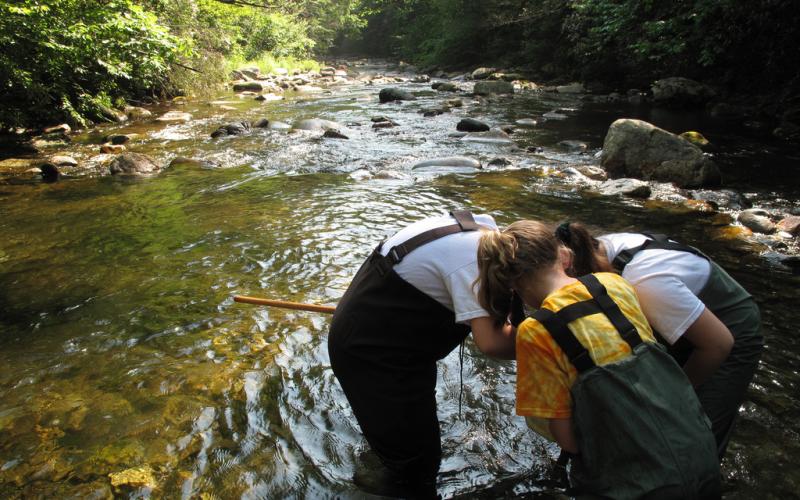A unique role for citizen science in ecological restoration: a case study in streams

A unique role for citizen science in ecological restoration: a case study in streams
Engaging community members in environmental monitoring can help land managers understand how ecosystems respond to human activities. Data collected by students can accurately reflected a stream’s recovery after restoration work.
Edwards, Patrick M., Gail Shaloum, and Daniel Bedell. “A unique role for citizen science in ecological restoration: a case study in streams.” Restoration Ecology 26, no. 1 (2017): 29-35. doi:10.1111/rec.12622.
It’s 6 o’clock on a freezing November morning, and a small group of people is standing in a dark parking lot next the churning Charles River in Boston. They are collecting water samples as part of a long-term project to measure the health of this once notoriously polluted river. They are citizen scientists: students, business people, retirees, and others who volunteer to participate in scientific research.
On the other side of the country, a group of high school students in western Oregon are in biology class. They’re standing in a creek, collecting bugs from its rocky bottom and recording data on what they find. They’re participating in a study to understand how citizen science can support environmental restoration projects. The report, by Patrick Edwards, Gail Shaloum, and Daniel Bedell, was published in the journal Restoration Ecology.
Over seven years, two thousand high school students and their teachers, partnering with college students and the research team, studied two streams in suburban Portland. One of the creeks, Rock Creek, had been degraded over time by nearby human development. The other, Balch Creek, was in an area with far less human impact. The students collected data to understand how well a restoration project in Rock Creek had improved water quality and salmon habitat. They were assisting with a Before, After, Control, Impact (BACI) study. By comparing Rock Creek with Balch Creek, where no restoration took place, scientists and students can understand if the changes they observed were due to the restoration work or other environmental factors.
The study methods were similar to those used by environmental monitoring programs and BACI studies across the country. The “bugs” the students collected weren’t all bugs, really. They’re aquatic macroinvertebrates, a group of crustaceans, insects, and mollusks which scientists and students alike can study to understand water quality in streams. While some invertebrates can thrive in polluted, sediment-choked, or low oxygen streams, others require clear, cold, fast moving water to survive.
In seven years, the students and their teachers collected and identified over 14,000 macroinvertebrates. As the students pulled the wriggling creatures from the water, they sorted them by pollution tolerance. The populations of sensitive species rebounded in the restored stream, a key indicator that restoration had improved stream quality. Importantly, the student data reflected the trends that would have been expected from by professional scientists studying similar river systems. This suggests that citizen science data can reliably support restoration and habitat improvement project .
The results of this study, and others like it, can build support for citizen science as a tool for restoration projects nationwide. Since 1990, conservation groups and government agencies in the United States have spent over $14 billion on watershed and stream restoration programs. Anecdotal evidence suggests that these programs have been successful, but it is expensive and time consuming to carefully evaluate their outcomes. Citizen science data has helped inform conservation planning and support ongoing learning for more successful, efficient, and affordable environmental programs. Back in Boston, those early morning volunteers have helped track the transformation of the Charles River from infamously “Dirty Water” to one of the cleanest urban rivers in the country.
Citizen science is about more than data collection. Conservation is most successful when it involves local communities, from kindergarteners to retirees. Citizen science has engaged thousands of people with science and nature. It has built strong connections between communities and the ecosystems in their backyards. Studies like the one in Oregon can help cement its place as an important and reliable way to meet the many goals of conservation projects nationwide.




